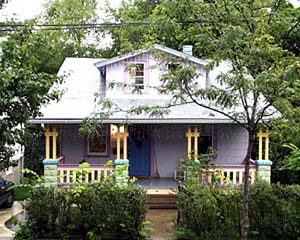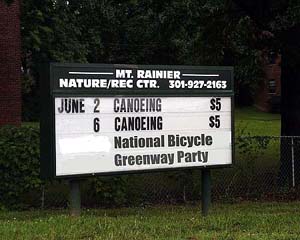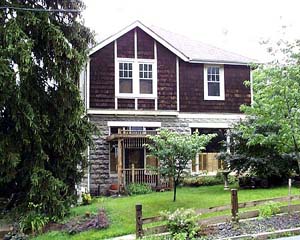Mount Rainier’s history is tied to the success of two little celebrated advances in the transportation of goods and people that, forty miles away, the city of Baltimore brought to the rest of America. The first of these was the Baltimore and Ohio Railroad (B&O), the first rail to connect the east coast with the midwest. And yet, before it did, in 1835, the B&O also became the first passenger rail service to connect to Washington, DC.
It wasn’t until 1853 that the B&O fulfilled its charter when it crossed the Appalachian Mountains and reached the Ohio River at Wheeling, WV, a town roughly a hundred miles west of Pittsburgh, PA. During the next 50 years, while the B&O was busy transporting goods to the Ohio where they could be shipped to the Mississippi River or sent by canal to important cities in the state of Ohio, the B&O also brought about extensive growth in the US Capital. So much so, that in helping the federal bureaucracy grow after the Civil War, the B&O's success forced many DC residents to look to the outlying areas for an escape from the congestion that had begun to occur in their federal City.
In order to satisfy this need for housing outside of the city limits, Baltimore’s second transportation advance came into play. In 1885 they introduced the electric streetcar to the world. While horse drawn public transportation had been running in New York City since 1827 and in many other cities in the Northeast, electrification made more distance and greater speed possible. By 1897 land speculators from the Pacific Northwest seized on this idea when they managed to make the 100 acre farm they had subdivided a stop on the first current powered line to the Capital.
The farm they purchased after the Civil War had been owned by the Clemson family who would in 1893 found the North Carolina university that bears their name. As they split their land into parcels, they named some of the streets "Cascade" and "Shasta” to honor their Northwestern roots. The new town that would result, Mount Rainier, was named to honor the ancient volcano that so predominates the part of the country from which they had come.
By 1910 development in Mount Rainier concentrated near the streetcar station at the intersection of Rhode Island Avenue and 34th Street. The area surrounding the station became the community's downtown with buildings housing both shops and their owners. In an effort to secure better service for their growing suburb, a group of early residents banded together to pursue the idea of incorporating the town. The citizens petitioned the State Legislature and the town was incorporated by charter granted on April 14, 1910.
Over the next four decades Mount Rainier flourished as the town boundaries expanded to include adjacent developing subdivisions, growing to 1.7 square miles in size and to as many as 11,000 people by 1950. However as we show you in the appendix in “Taken for a Ride”, in cities big and small all over the US, it was General Motors and the collusion they had formed with Big Oil and tire manufacturers that tore at the heart and soul of Mount Rainier. After buses replaced the beloved streetcar on September 7, 1958, people and businesses fled to further-out suburbs, and the town began a protracted struggle to redefine itself economically and socially.
For the next two decades population began to drop and many of its grand homes began to show signs of neglect Its once thriving downtown became more and more quiet. This trend continued until the 1980s, when younger families once again became aware of the charm and advantages of this former streetcar suburb.
The late 1980s brought the historic preservation movement and an understanding of the history and architectural value of Mount Rainier's housing stock. In 1990 all of this was recognized when most of the City was listed in the National Register of Historic Places. At present 8.500 people proudly call Mount Rainier home.
Successive generations of government workers, tradespeople, artisans, and service professionals have lived in the one- and two-story bungalows built by the first Mount Rainier families. They inherited a small-town infrastructure, complete with retail stores, churches, schools, and narrow streets. Decades-old elm trees dominate the neighborhoods, where cozy front porches vie with well-traveled sidewalks as venues for good conversation.
The city looks and feels like the old trolley town that it is. And it was at one of the only recently built structures, its City Hall, that we would met its Mayor.



